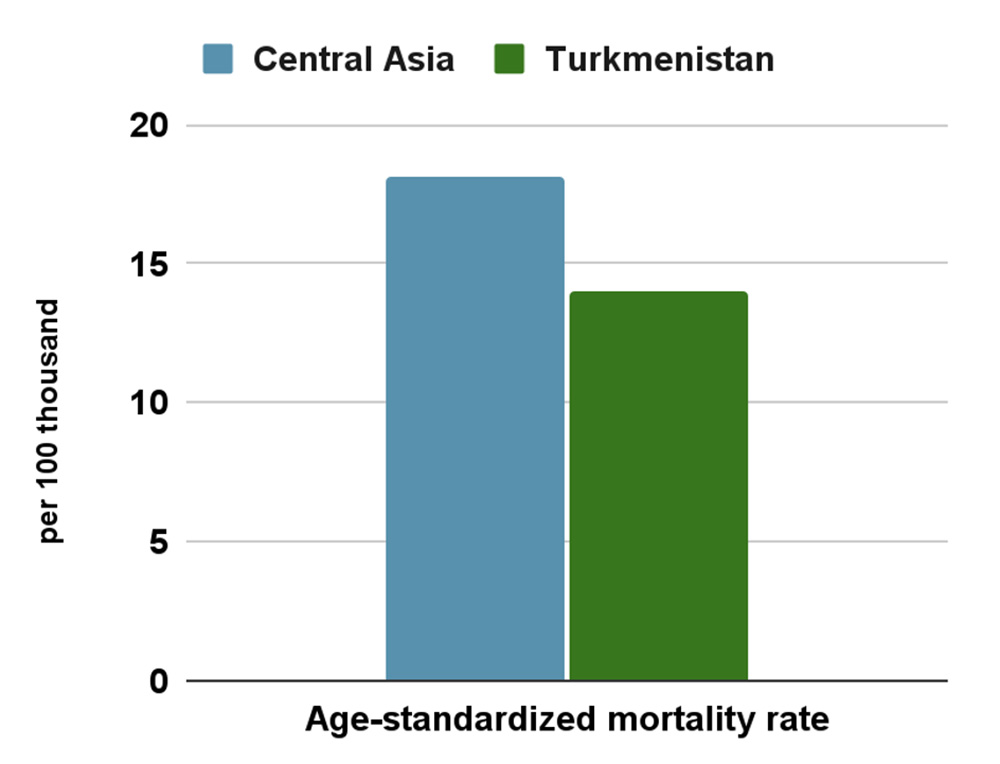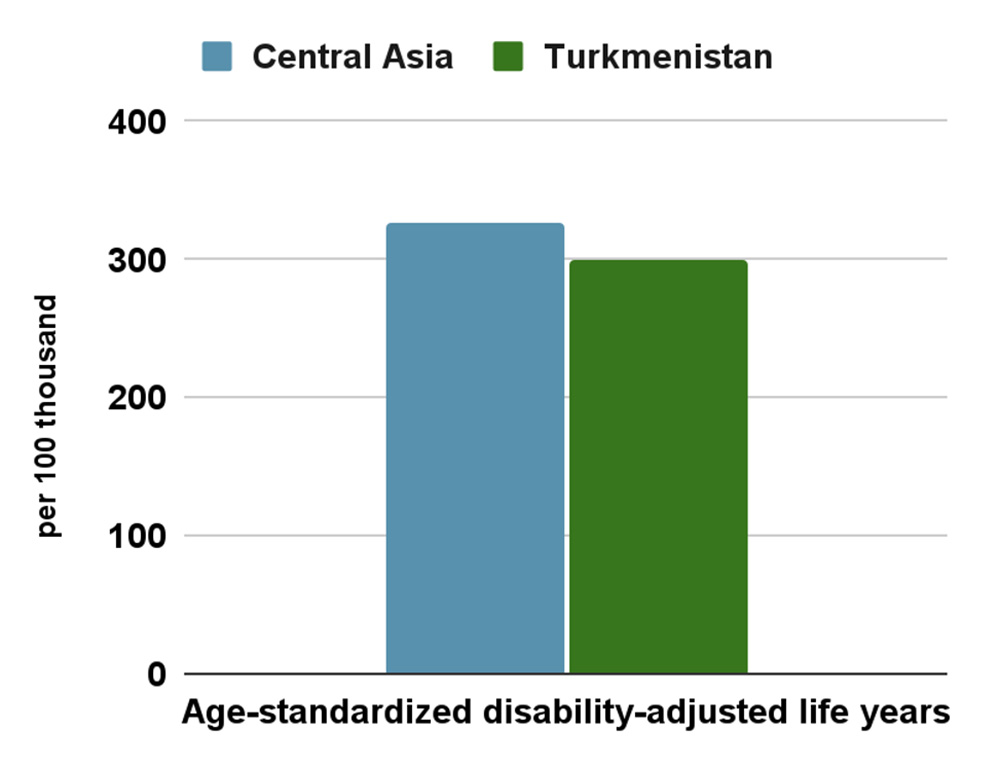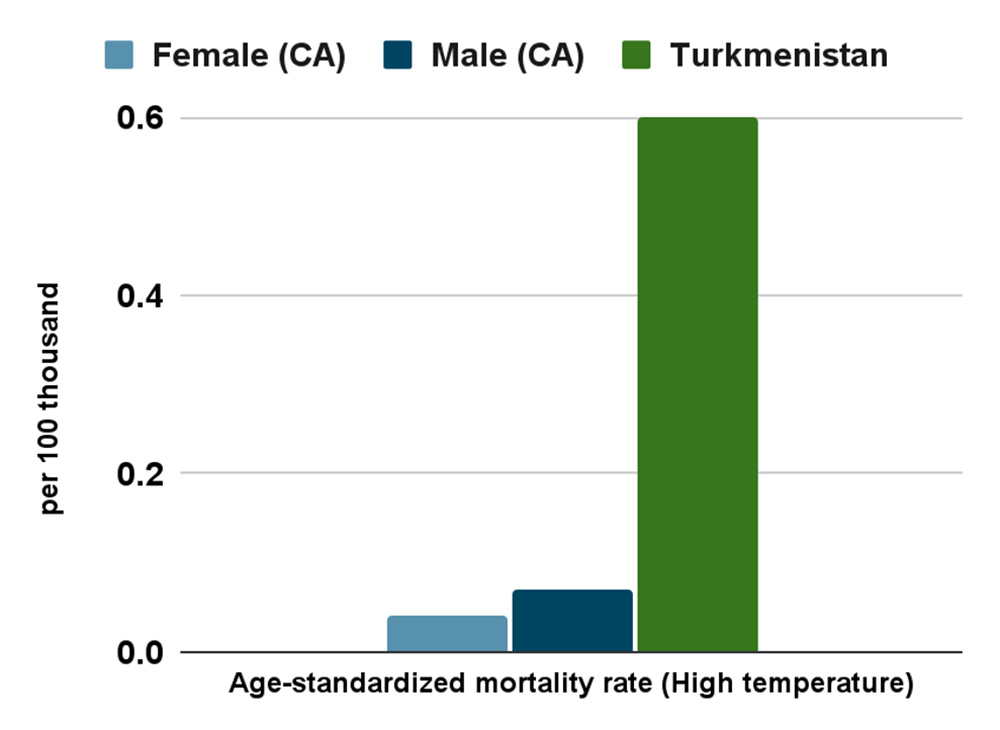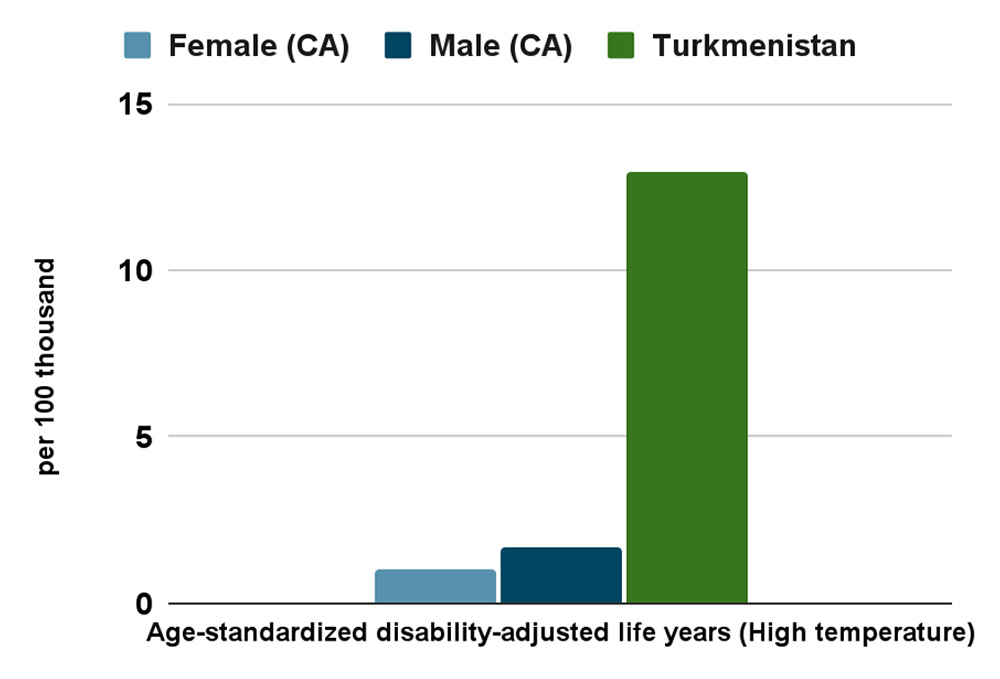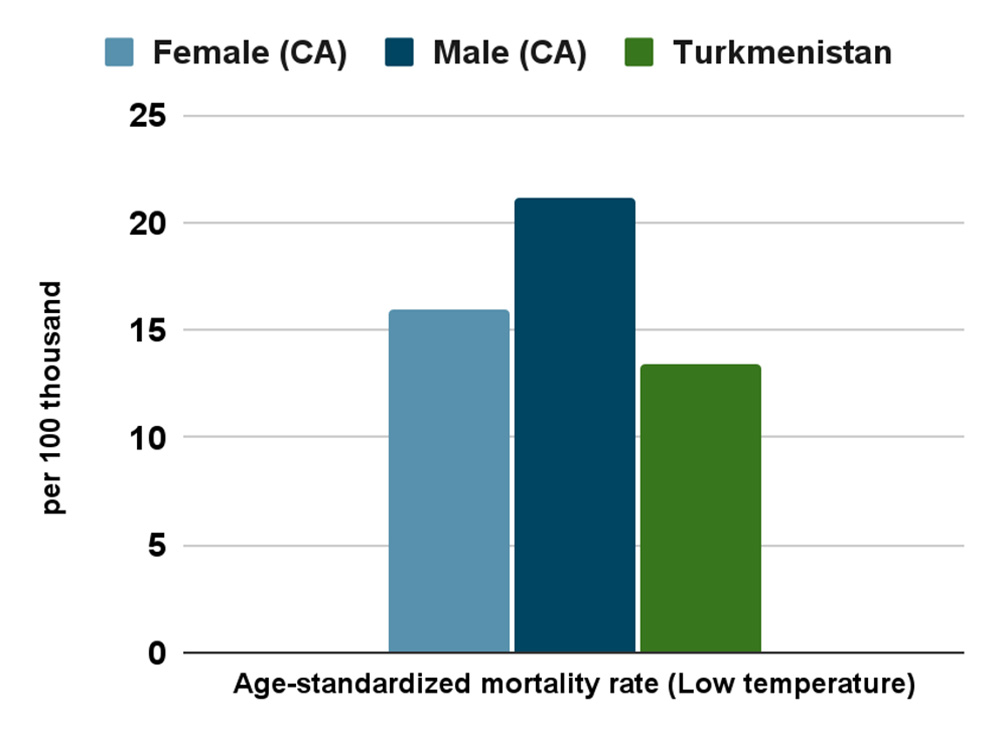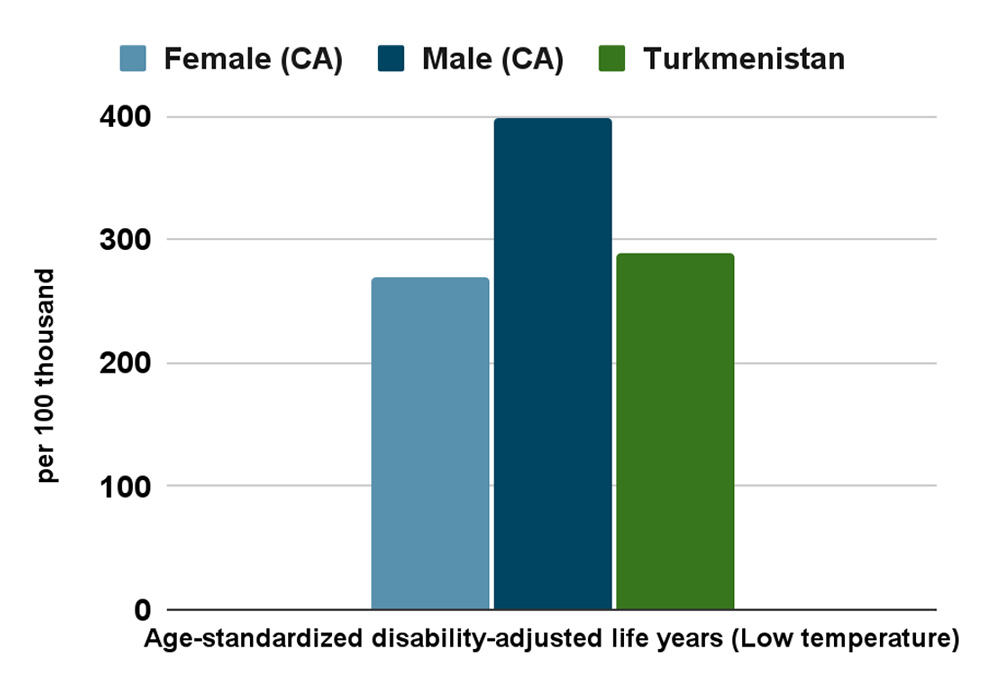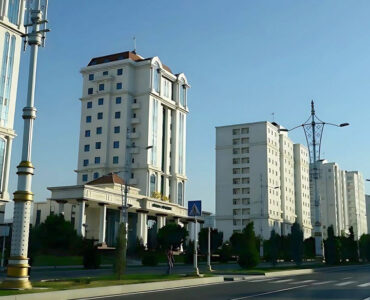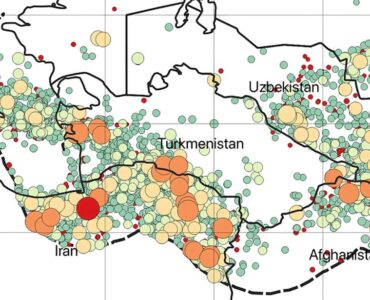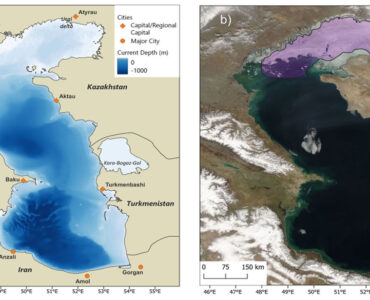A new ecological study in the journal of Neurology has estimated the global burden of stroke attributable to non-optimal temperatures across 204 countries. Globally the burden has decreased in almost all regions, except for Central Asia, where it has grown especially among men. According to the study, Central Asia had the heaviest health burden due to non-optimal temperatures.
In Turkmenistan, age-standardized mortality rate (ASMR) was estimated to be 13.97 per 100 thousand people and the age-standardized disability-adjusted life years (DALY) rate (ASDR) was 300.2 per 100 thousand people.
Source: Progres.online developed the graphs using the results of the study.
A stroke is a cardiovascular disease, more common in elderly, attributed to 6.55 million deaths in 2019. Drastic temperature changes that became more common in recent years due to climate change have strongly affected human health. This study has analyzed the number and rate of stroke deaths and DALYs due to non-optimal temperature from 1990 to 2019. DALY is defined as years lived with disability and lost years due to premature death.
In 2019, Central Asia, Eastern Europe, and East Asia were the top three stroke burdened regions among 21 regions. In general, the burden is shown to be greater for men than women, and higher for elderly population than younger people. In Turkmenistan, both ASMR and ASDR rates due to non-optimal temperatures were slightly lower than the average rates for Central Asia. The ASMR rate in the country was 13.97 per 100 thousand people and ASDR rate was 300.2 per 100 thousand people, whereas the respective rates in Central Asia were 18.12 per 100 thousand people (ASMR) and 327.35 per 100 thousand people Globally, low temperatures have been shown to contribute more to stroke deaths and DALYs than high temperatures.
Impacts of high temperature in Central Asia are very limited. In the past 30 years, the death rate has decreased by more than 13% per year for females, but has grown for males at an annualized 23%. DALYs in Central Asia were estimated to be significantly lower than in many regions. However, Central Asia is the only region where DALYs due to high temperature have grown at an annualized rate of 17% for males and 283% for females. In Turkmenistan, both the death rate and DALYs are higher than the regional average. It is expected that in the future, stroke burden due to high temperature will increase sharply around the world.
Source: Progres.online developed the graphs using the results of the study.
Impact of low temperatures
Low temperatures have had the bigger impact in Central Asia. Death instances have risen in 1990-2019 in Central Asia for males, but have declined for females. In terms of low temperature-induced DALYs, the rate was lower for females than for males, but has decreased for both in the past. Both ASMR and ASDR were lower in Turkmenistan.
Source: Progres.online developed the graphs using the results of the study.
Conclusions
The study highlights that although the ASMR and ASDR for stroke burden have declined since 1990, the total numbers have continued to rise. The burden is especially high in Eastern Europe, Central Asia, and East Asia, with male and elderly population bearing a greater share of the burden. While low temperatures are currently the main burden, the burden due to high temperatures will rise significantly in the coming decades. The study highlights that countries with different climates need to pay attention to different stroke subtypes. Central Asia lacks research for its specific region and should focus on researching the strokes induced by low temperature.


